
Media Journal is a self-hosted, open-source web app for tracking movies, TV shows, games, books, manga, and anime. It features separate lists, progress tracking, multiple rating systems, and automated checks for sequels and new seasons. Users can import/export data and access stats, recent activity, and favorites on the homepage. The app is easy to set up using Docker with API key configuration for enhanced functionality. In this step by step guide I will show you how to install Media Journal on your Synology NAS using Docker & Portainer.
This guide works perfectly with the latest Media Journal v1.13.0 release.
STEP 1
Please Support My work by Making a Donation.
STEP 2
Install Portainer using my step by step guide. If you already have Portainer installed on your Synology NAS, skip this STEP. Attention: Make sure you have installed the latest Portainer version.
STEP 3
Go to File Station and open the docker folder. Inside the docker folder, create one new folder and name it media-journal. Follow the instructions in the image below.
Note: Be careful to enter only lowercase, not uppercase letters.
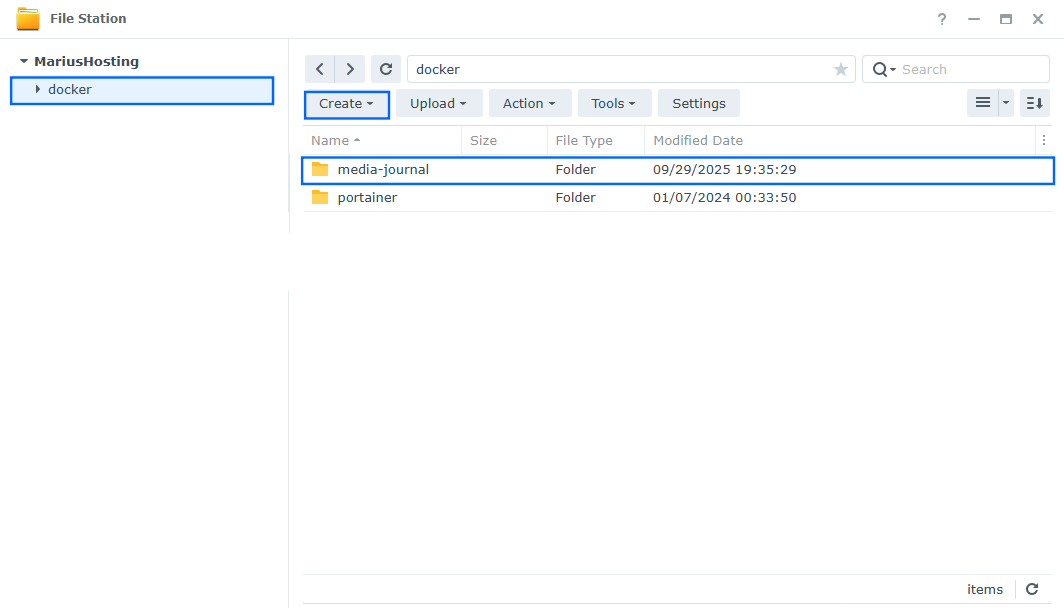
STEP 4
Now create two new folders inside the media-journal folder that you have previously created at STEP 3 and name them data and media. Follow the instructions in the image below.
Note: Be careful to enter only lowercase, not uppercase letters.
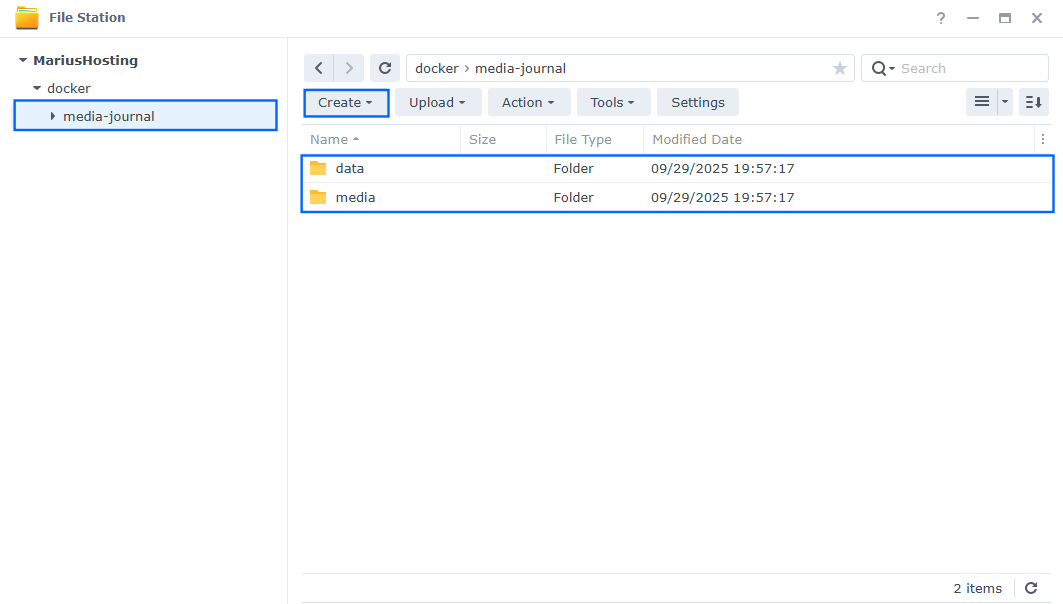
STEP 5
Log into Portainer using your username and password. On the left sidebar in Portainer, click on Home then Live connect. Follow the instructions in the image below.
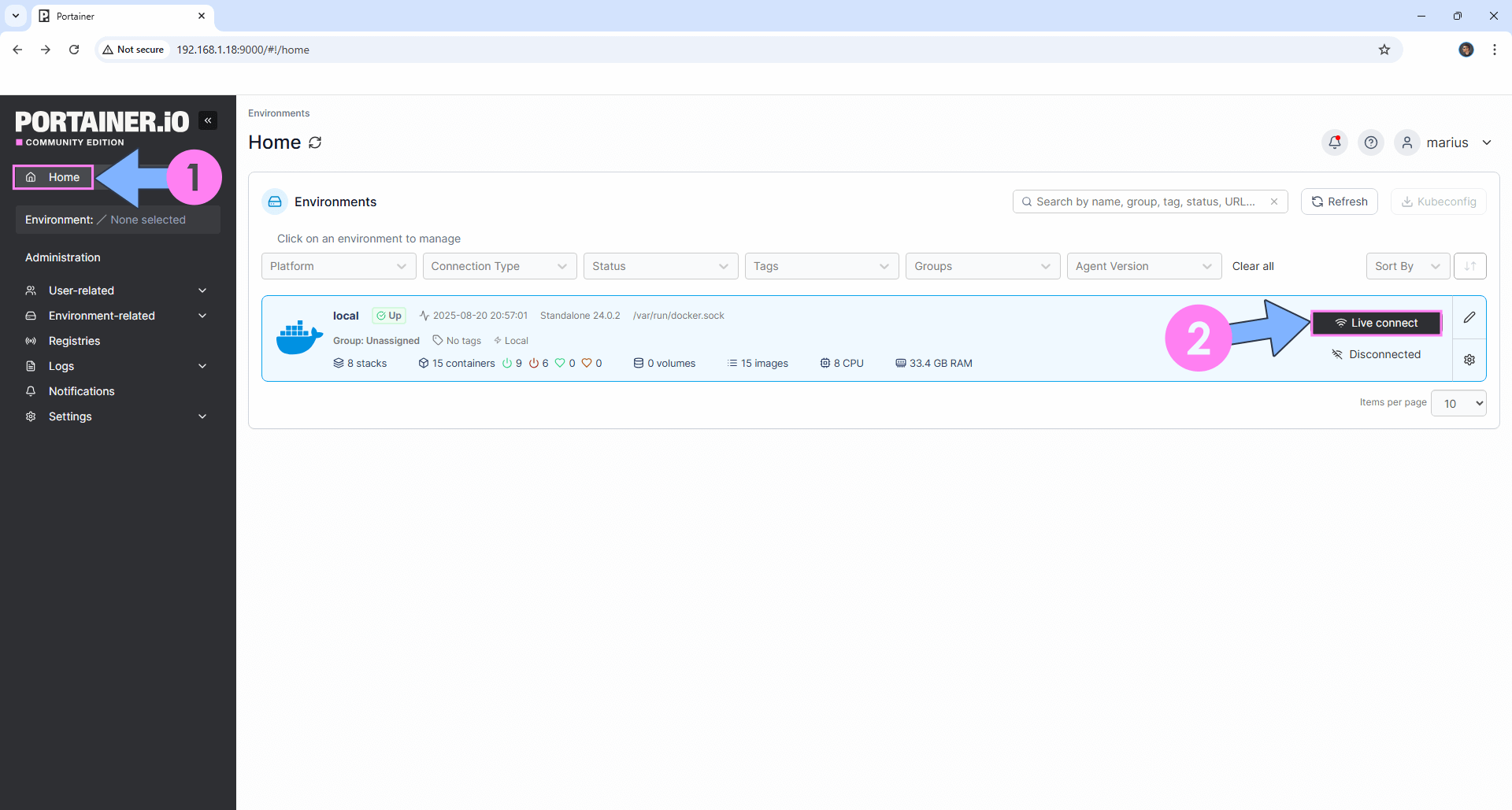
On the left sidebar in Portainer, click on Stacks then + Add stack. Follow the instructions in the image below.
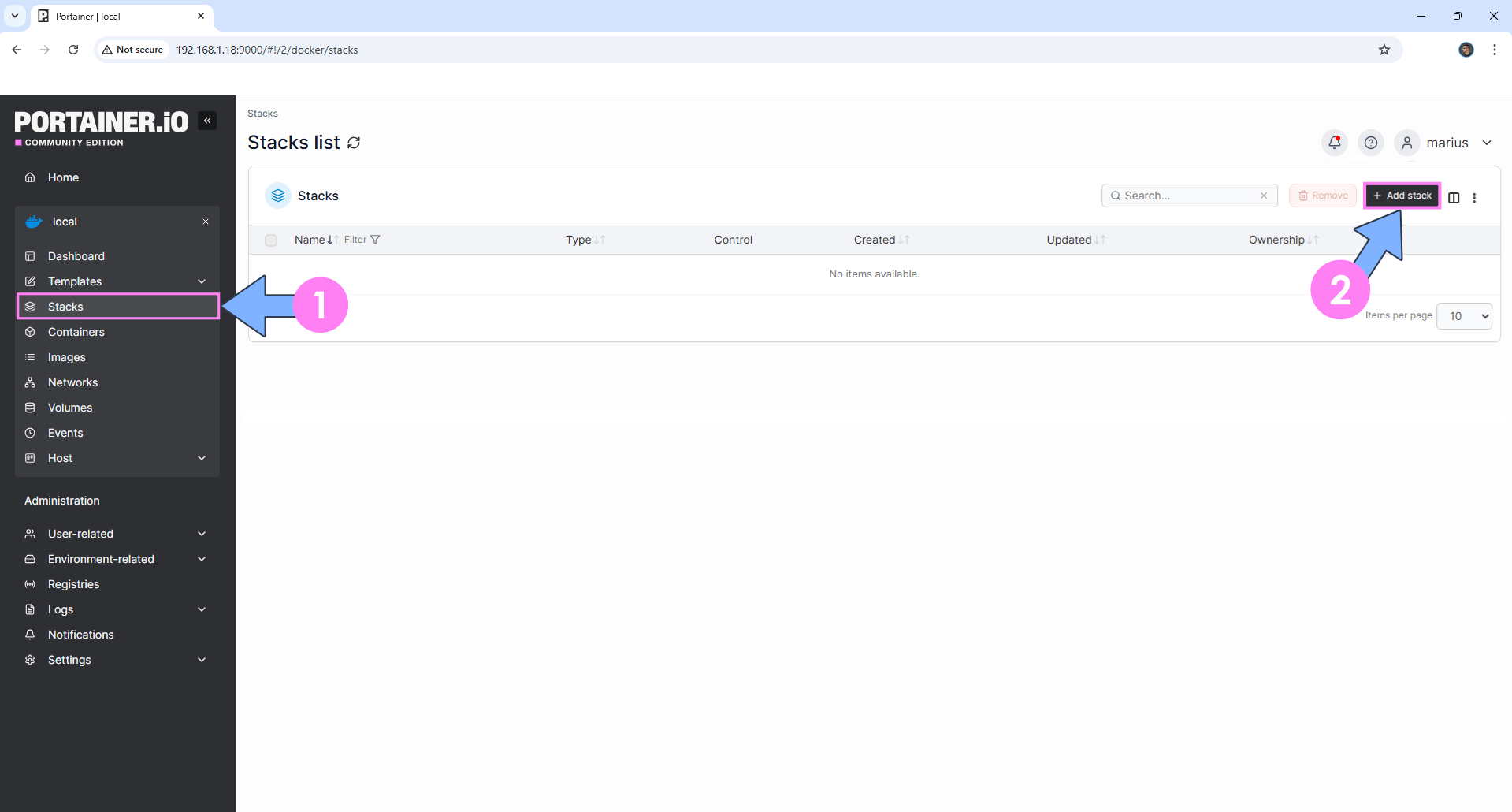
STEP 6
In the Name field type in mediajournal. Follow the instructions in the image below.
services:
media-journal:
image: ghcr.io/mihail-pop/media-journal:latest
container_name: Media-Journal
healthcheck:
test: timeout 10s bash -c ':> /dev/tcp/127.0.0.1/8000' || exit 1
interval: 10s
timeout: 5s
retries: 3
start_period: 90s
command: >
sh -c "python manage.py migrate &&
python manage.py runserver 0.0.0.0:8000"
security_opt:
- no-new-privileges:true
ports:
- 8242:8000
environment:
PYTHONDONTWRITEBYTECODE: 1
PYTHONUNBUFFERED: 1
#You can add multiple CSRF_TRUSTED_ORIGINS separated by a comma.
CSRF_TRUSTED_ORIGINS: http://192.168.1.18:8242 #https://mediajournal.mariushosting.synology.me
volumes:
- /volume1/docker/media-journal/media:/app/media:rw
- /volume1/docker/media-journal/data:/app/data:rw
restart: on-failure:5
Note: Before you paste the code above in the Web editor area below, change the value for CSRF_TRUSTED_ORIGINS. Type in your own local NAS IP. 192.168.1.18 is my local NAS IP. You should add your own local NAS IP.
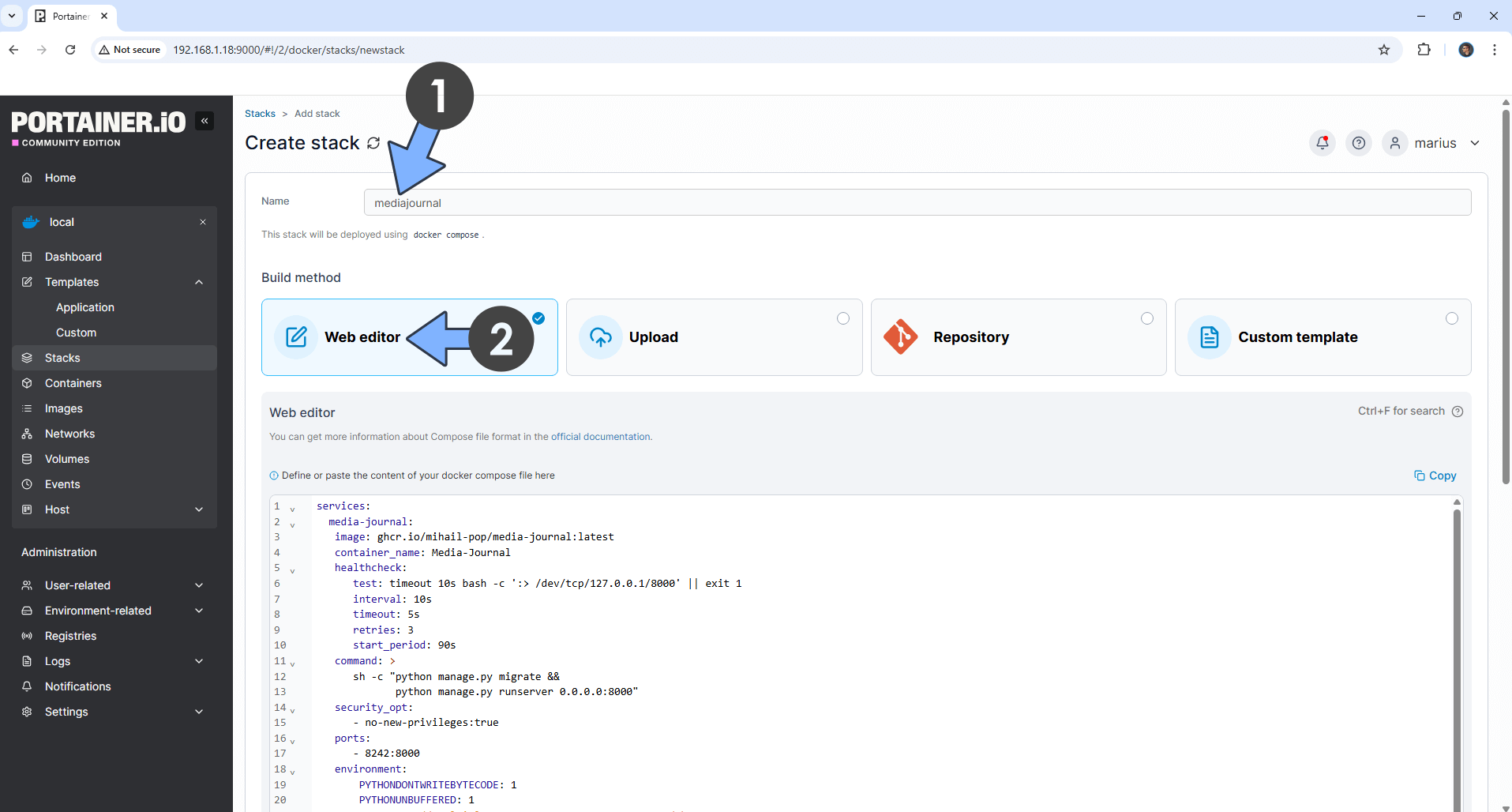
STEP 7
Scroll down on the page until you see a button named Deploy the stack. Click on it. Follow the instructions in the image below. The installation process can take up to a few minutes. It will depend on your Internet speed connection.
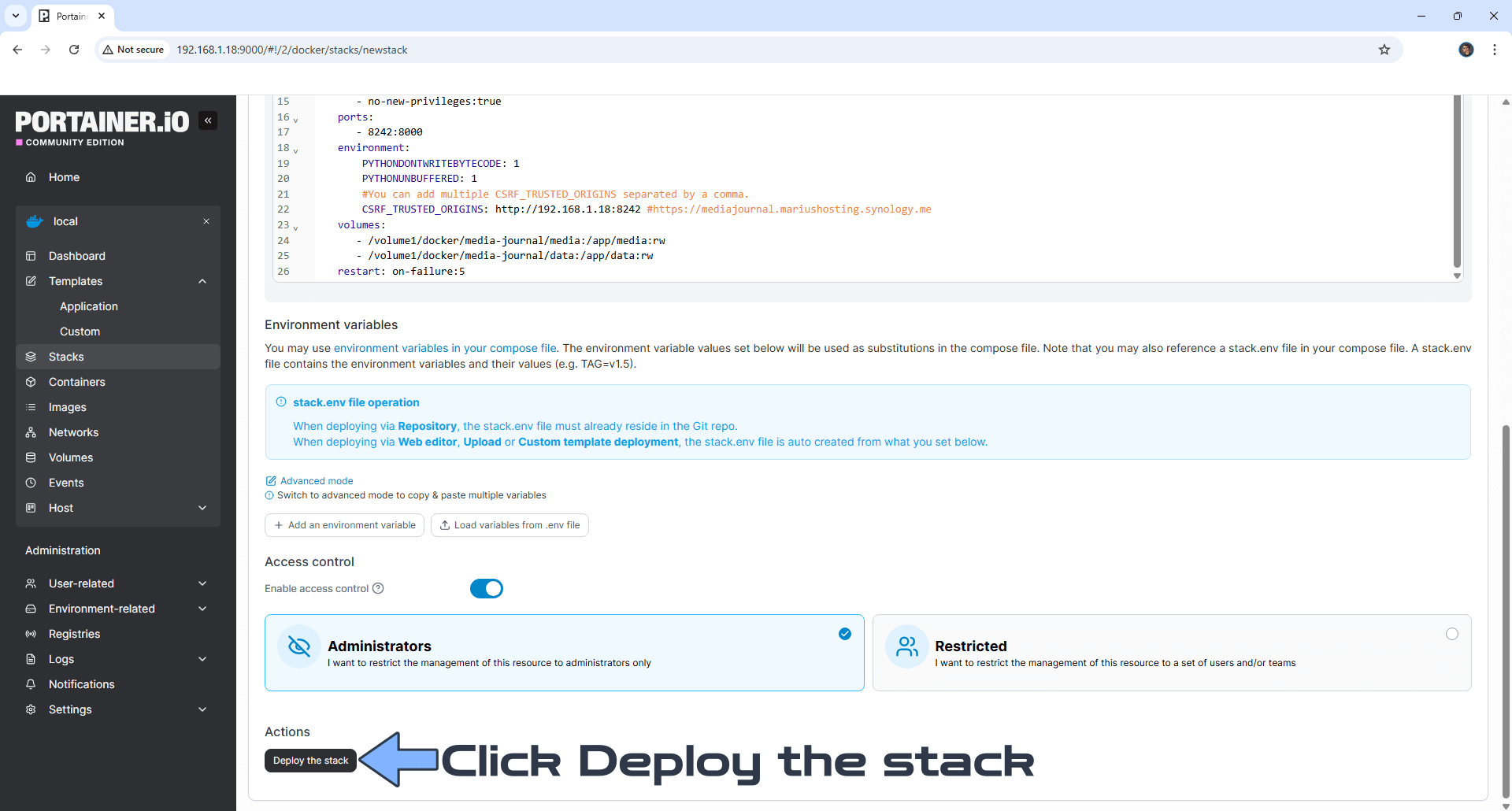
STEP 8
If everything goes right, you will see the following message at the top right of your screen: “Success Stack successfully deployed“.
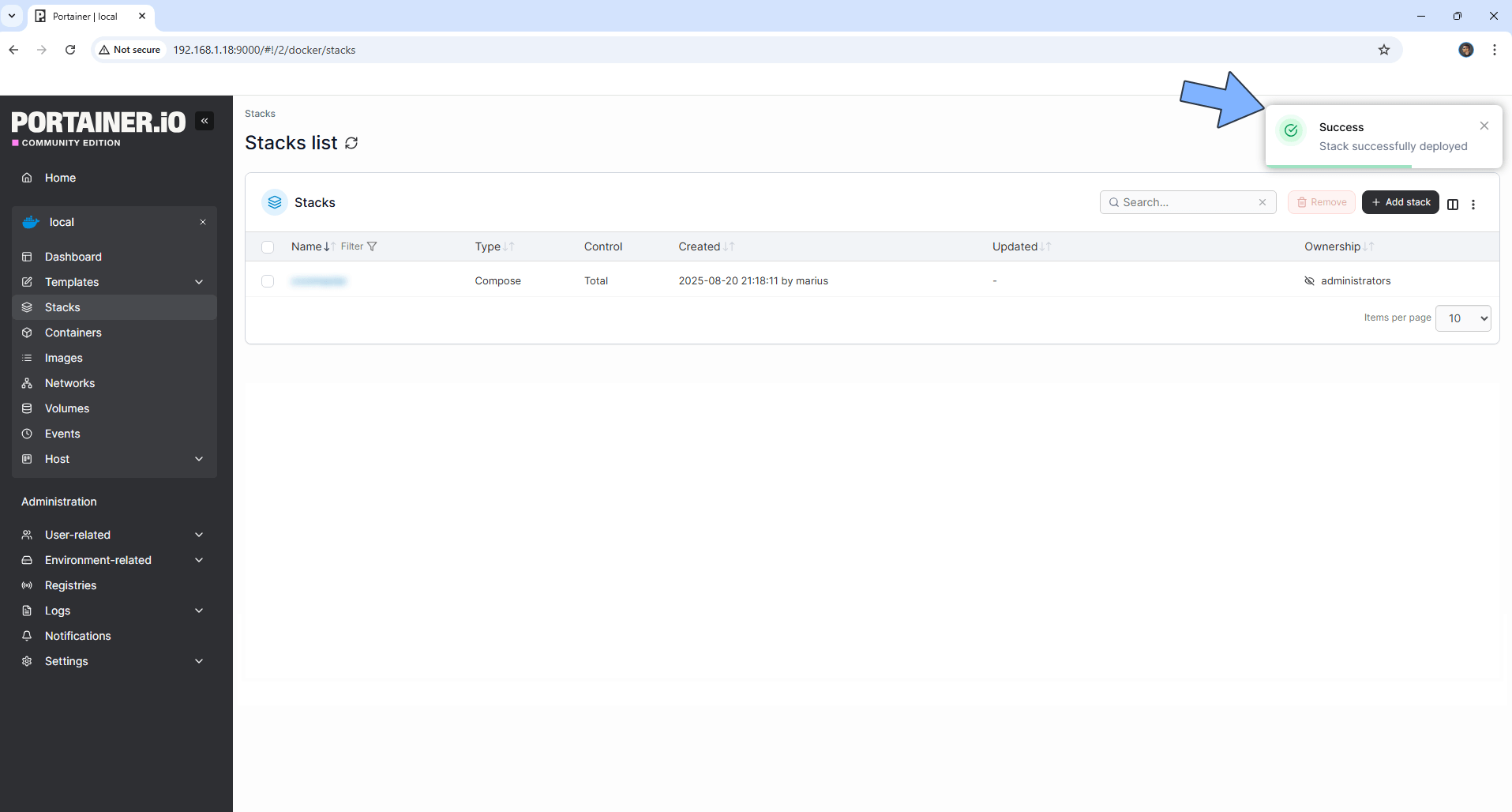
STEP 9
🟢Please Support My work by Making a Donation. Almost 99,9% of the people that install something using my guides forget to support my work, or just ignore STEP 1. I’ve been very honest about this aspect of my work since the beginning: I don’t run any ADS, I don’t require subscriptions, paid or otherwise, I don’t collect IPs, emails, and I don’t have any referral links from Amazon or other merchants. I also don’t have any POP-UPs or COOKIES. I have repeatedly been told over the years how much I have contributed to the community. It’s something I love doing and have been honest about my passion since the beginning. But I also Need The Community to Support me Back to be able to continue doing this work.
STEP 10
The installation process can take up to a few seconds/minutes. It will depend on your Internet speed connection. Now open your browser and type in http://Synology-ip-address:8242 Click Discover. Follow the instructions in the image below.
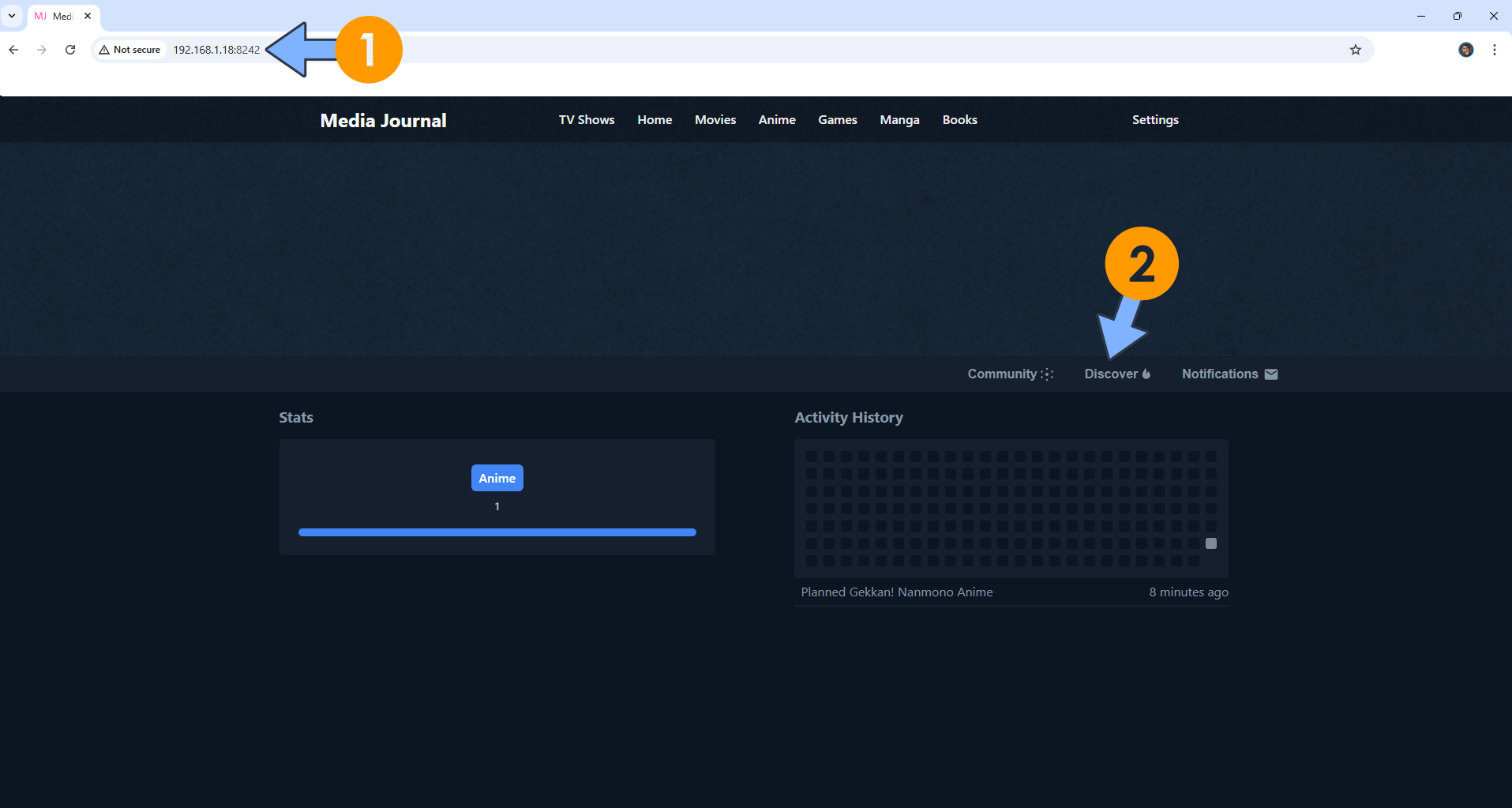
STEP 11
Search for Manga and add something that you like to your own list. Follow the instructions in the image below.

STEP 12
At the top right of the page, click Settings. In the API Keys tab you can add multiple API keys from TMDB or IGDB etc. Follow the instructions in the image below.
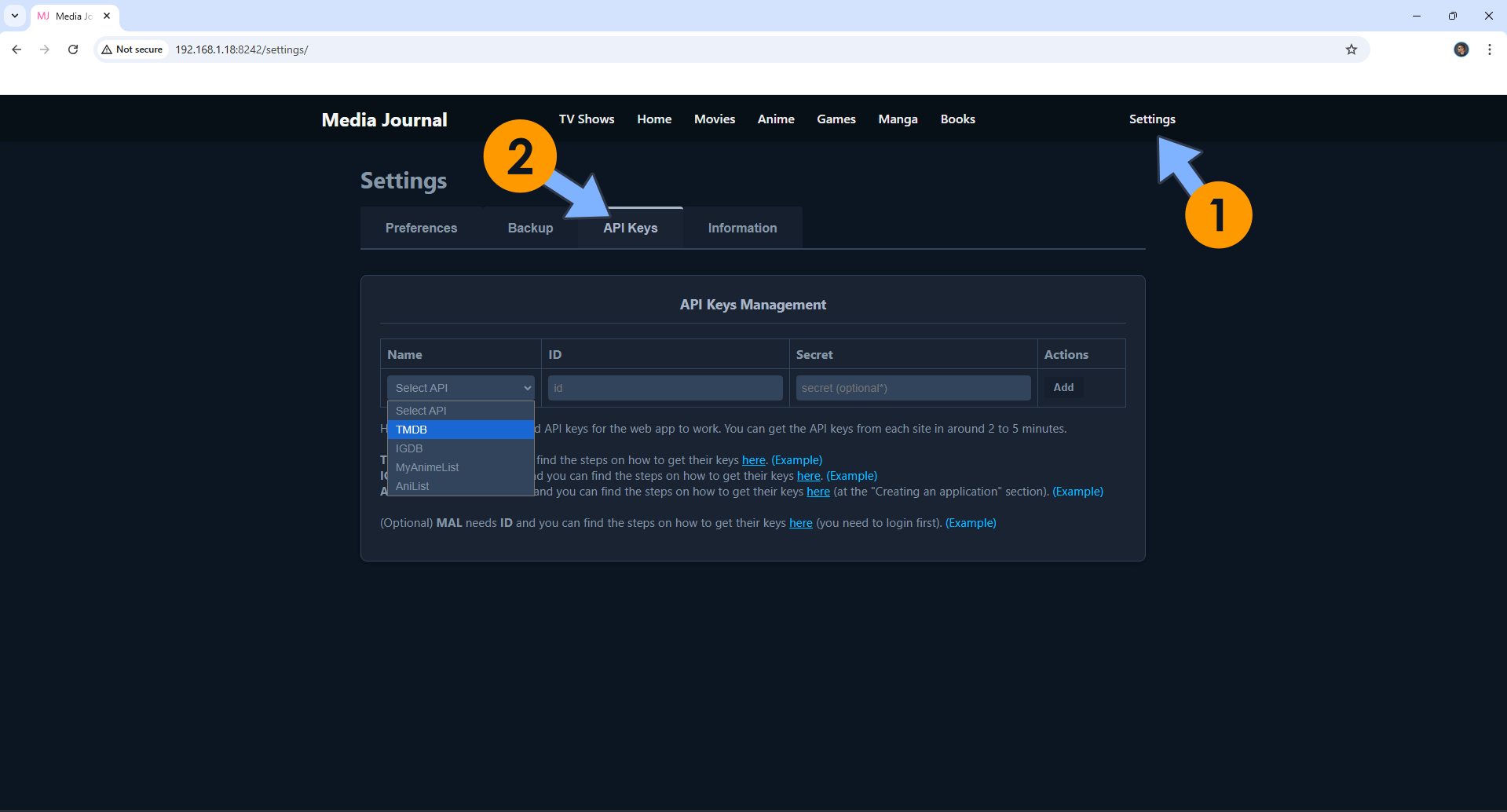
STEP 13
If you want, you can also Search for Books. Click the Books tab, then the search icon. In the apposite area, type in the name of a book that you like. Click Live Search. You can add the books that you like to your own list. Follow the instructions in the image below.
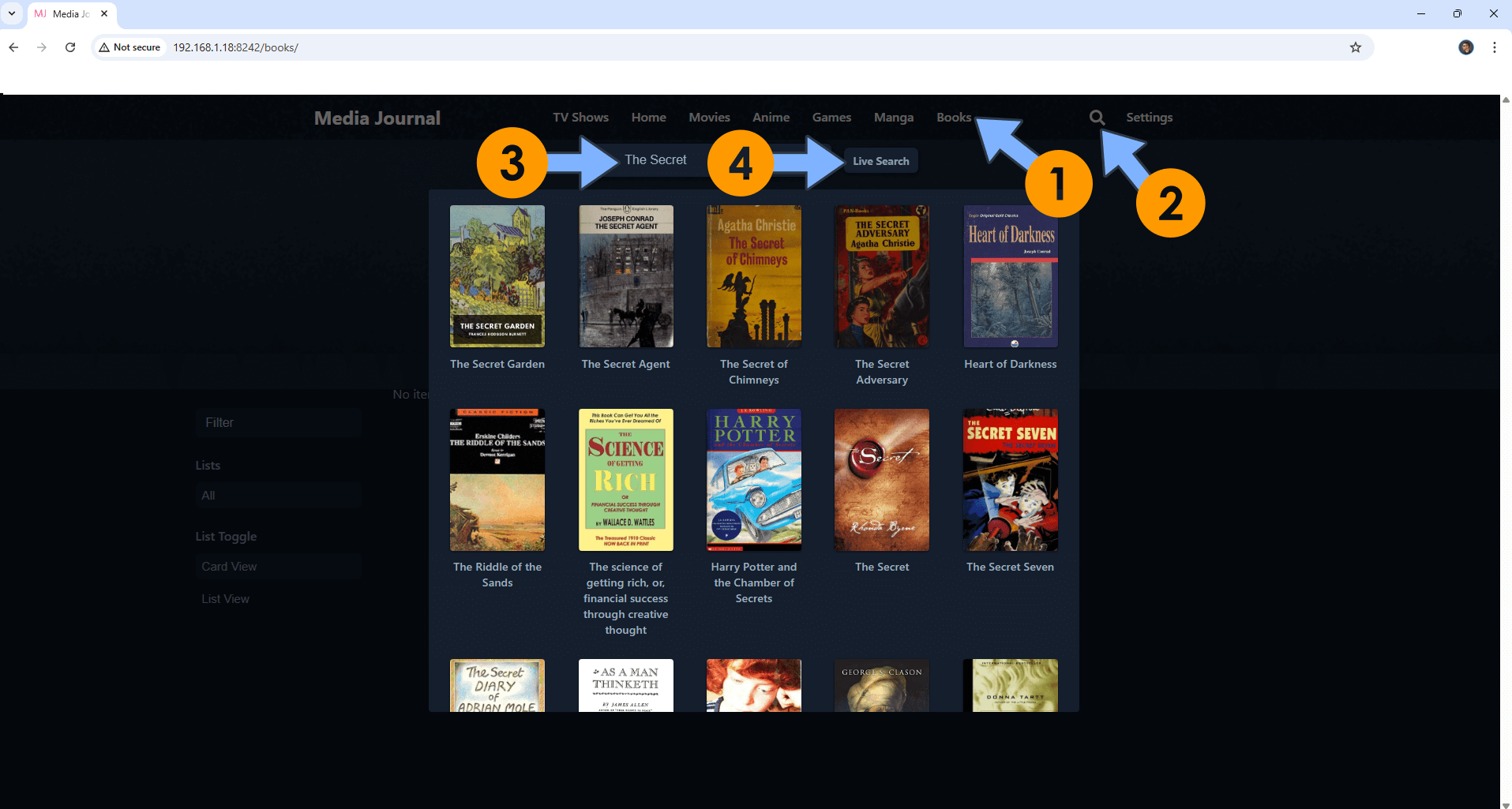
STEP 14
Your Media Journal dashboard at a glance!

Enjoy Media Journal!
If you encounter issues by using this container, make sure to check out the Common Docker issues article.
Note: If you want to run the Media Journal container over HTTPS, check How to Run Docker Containers Over HTTPS. In order to make Media Journal work via HTTPS, it’s mandatory to activate WebSocket.
Note: Can I run Docker on my Synology NAS? See the supported models.
Note: How to Back Up Docker Containers on your Synology NAS.
Note: Find out how to update the Media Journal container with the latest image.
Note: How to Free Disk Space on Your NAS if You Run Docker.
Note: How to Schedule Start & Stop For Docker Containers.
Note: How to Activate Email Notifications.
Note: How to Add Access Control Profile on Your NAS.
Note: How to Change Docker Containers Restart Policy.
Note: How to Use Docker Containers With VPN.
Note: Convert Docker Run Into Docker Compose.
Note: How to Clean Docker.
Note: How to Clean Docker Automatically.
Note: Best Practices When Using Docker and DDNS.
Note: Some Docker Containers Need WebSocket.
Note: Find out the Best NAS Models For Docker.
Note: Activate Gmail SMTP For Docker Containers.
This post was updated on Sunday / December 21st, 2025 at 2:21 PM
